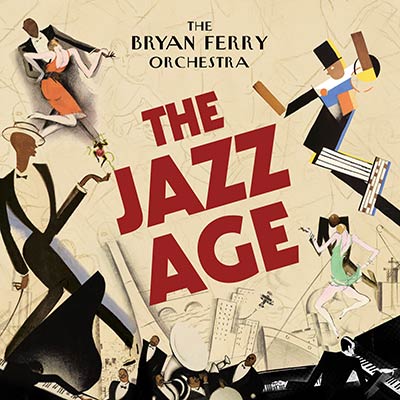Posted March 21, 2013
By ISABEL BRADOR
“The Jazz Age”, the first album released by The Bryan Ferry Orchestra, transports listeners to the Roaring ‘20s. The album’s tracks automatically conjure up images of flappers, speakeasies and the sultry rhythm of a big band.
 Yet, if some of the songs sound slightly familiar, it isn’t completely to blame on a case of deja vu. The Bryan Ferry Orchestra’s first album is an interpretation of some Roxy Music’s most popular songs.
Yet, if some of the songs sound slightly familiar, it isn’t completely to blame on a case of deja vu. The Bryan Ferry Orchestra’s first album is an interpretation of some Roxy Music’s most popular songs.
This comes as no surprise since the lead singer of Roxy Music and the founder of The Bryan Ferry Orchestra is none other than Bryan Ferry.
Ferry does not arrange any of the pieces the orchestra plays, nor does he play in the orchestra himself. Rather he recruited some of the best artists to reinterpret his original song writing in the style of the Roaring ‘20s. The singer’s website quotes him as saying, “I wanted my music to have another life, a life without words.”
Thankfully, the life without words is a good one. The first track on the album “Do the Strand,” is a plucky early 20th century reinterpretation of Roxy Music’s original track with the same name. Surprisingly though, the name is all these two tracks have in common. The version of the song on “ The Jazz Age” album may at first not sound like the original, but those who are listening closely will be able to hear it.
The same thing happens to Roxy Music’s hit song “Slave to Love.” Besides a few familiar notes the rest of the track is an interpretation. It may be too far to say that the track sounds like a completely different song, but it is decidedly different. Not that anyone’s complaining.
The track is filled with sweet trumpet sounds and a decidedly faster beat than the original track. While listeners might have been able to slow dance, at an excruciatingly slow pace, to the original, listeners could foxtrot to the interpretation. No, seriously, they really could.
The tracks on the album are a delight to those who are turn of the century jazz enthusiasts. One track in particular, “This is Tomorrow’ sounds like it came straight from the bandstand of a speakeasy. Even listeners, with no connection to Bryan Ferry or Roxy Music, can enjoy this album. The only listeners who may be disappointed are the Roxy Music fans.
The album was publicized and heavily promoted by Ferry as an interpretation of his songs. Keeping this in mind, the album is a success. Yet if Fans were expecting a significant amount of Ferry or Roxy Music’s original sound, then there may be some disappointment. The musical director and arranger of all the tracks on the album, Colin Good, is a pianist and arranger in the London swing and jazz scene. He takes Ferry’s music in an entire new direction. A very good direction, but some fans may feel misled.
Overall, the tracks are beautiful and a great listen. The only problem Ferry fans may encounter is the fact that hearing the early 20th century renditions is more likely to remind them of prohibition and the glamorous ‘20s then of being at a Roxy Music or Bryan Ferry concert. The “Ferry” is still discernible in The Bryan Ferry Orchestra’s first album, but it’s almost drowned out by the beautiful and soulful sound of the 1920s.
- “The Jazz Age”
- Released: Nov. 26, 2012
- Available at: Amazon.com, iTunes Store in the U.S. (only in stores in the U.K.)
- Price: $10.99 for entire album
- Available in: Vinyl, Audio CD, Mp3
- Genre: Jazz
- Styles: New Orleans Jazz Revival, Retro Swing
- Reviewer’s rating: Four out of five stars
